Whitby Abbey
Can you imagine contemporary culture without the idea of a brooding, blood-sucking vampire? We have Bram Stoker's 19th century novel Dracula, which is set near the brooding ruins of Whitby Abbey, to thank.
Stoker was on holiday in Whitby when he read about Vlad the Impaler - a 15th century prince (nicknamed 'Dracula') with a taste for cruelty. Inspired by this and by the rugged landscape around him, Stoker set much of his gothic tale in the Yorkshire town.
In the novel, Dracula travels to England from rural Transylvania. One stormy night, a Russian ship runs aground off Whitby after its crew mysteriously vanish. The only survivor is a large dog, which runs up the steps from the sea to the abbey. The dog is Dracula in disguise - and his reign of terror begins.
Whitby Abbey can also lay claim to being the home of the first named English poet, Caedmon. He lived there shortly after its foundation in the 7th century.
Discover Whitby AbbeyStonehenge
William Wordsworth visited the stones in 1793, and wrote about it in Guilt and Sorrow.
'Pile of Stone-henge! So proud to hint yet keep
Thy secrets, thou that lov'st to stand and hear
The Plain resounding to the whirlwind's sweep'.
Stonehenge is also the setting for the climax of Thomas Hardy's Tess of the D'Urbevilles (1891). After committing murder, Tess goes on the run with Angel Clare, the man she loves and wanted to marry. Walking on Salisbury Plain at night, they almost bump into Stonehenge - 'a vast erection…rising sheer from the grass'. Tess sleeps on one of the stones and Angel says she is 'lying on an altar'. Here Hardy might be alluding to theories that Stonehenge was a place of human sacrifice.
Sure enough, the next morning they are caught by their pursuers, and Tess is hanged soon after.
Discover StonehengeHadrian's Wall
The former frontier of the Roman Empire has inspired bestselling writers for centuries. Perhaps the best known recent example is George RR Martin, who has said that the huge ice wall in A Game of Thrones (1996) was inspired by a 1981 visit to Hadrian's Wall.
Hadrian's Wall itself features in plenty of other stories. Rosemary Sutcliff's The Eagle of the Ninth (1954) tells the story of a Roman called Marcus and his slave, Esca. They are on a quest beyond the safety of Hadrian's Wall to find out what happened to Marcus' father, who disappeared - along with 4,000 men of the Ninth Legion.
Sutcliff paints a vivid picture of the wall: 'a great gash of stonework, still raw with newness. Eighty miles of fortresses, mile-castles, watch-towers, strung on one great curtain wall […]This was the great Wall of Hadrian, shutting out the menace of the north.'
Poet WH Auden imagined a bleak life on the wall for Roman soldiers. In Roman Wall Blues (1937) his soldier complains: 'Over the heather the wet wind blows,/ I've lice in my tunic and a cold in my nose./ The rain comes pattering out of the sky,/ I'm a Wall soldier, and I don't know why.'
Discover Hadrian's WallKenilworth Castle
Sir Walter Scott was the pioneer of the historical novel. Kenilworth (1821) tells the story of Robert Dudley's first wife, Amy Rosbart, who was found dead at the bottom of a flight of stairs in 1560. Dudley was the favourite of Elizabeth I, and some suspected foul play. Dudley, so the rumour goes, wanted to marry Elizabeth, and Amy was in the way.
Scott's version of the scandal is set in 1575, against the backdrop of Elizabeth's second visit to Kenilworth Castle when the castle reached the peak of its prestige.
Describing the occasion, Scott wrote 'The splendour of the approaching revels at Kenilworth was now the conversation through all England; and everything was collected at home, or from abroad, which could add to the gaiety or glory of the prepared reception of Elizabeth at the house of her most distinguished favourite'.
Discover Kenilworth CastleHome of Charles Darwin, Down House
Charles Darwin wrote one of the most famous books in history from Down House in Kent. On the Origin of Species (1859) set out his theory of evolution and changed the way we think about the world forever.
Today you can stand in the very study where Darwin wrote the book. The room still has Darwin's original furniture, specimens and scientific instruments. As Darwin's son Francis recalled, it has a 'general air of simpleness, makeshift, & general oddness'. It's the perfect place to get an insight into the mind of one of history's most brilliant scientists.
Discover Down HouseTintagel Castle
Part of Tintagel Castle's appeal lies in its links to the stories of King Arthur. His tale is told in the 12th century History of the Kings of Britain by Geoffrey of Monmouth, one of the most popular books of the Middle Ages.
Arthur's father Uther Pendragon, the king of the Britons, falls in love with Ygerna - who is married to the Duke of Cornwall. Uther lays siege to Tintagel, where she is being kept, but because it is 'built high above the sea' an advisor tells him he has no hope of success.
So he uses Merlin's magic to sneak in and seduce Ygerna, while disguised as her husband. And the future King Arthur is conceived.
The tale was repeated by Sir Thomas Malory in his 15th centuary account of the legends, Le Morte D'Arthur. It was watered down by Alfred, Lord Tennyson, in his Idylls of the King, published between 1859 and 1885. He has the infant Arthur washing up on the shores beneath Tintagel on the night Uther dies.
The castle also features in the medieval story of Tristan and Yseult. It has been retold many times, including in a poem by Charles Swinburne, a play by Thomas Hardy, and a novel by Rosemary Sutcliff.
Discover Tintagel CastleWarkworth Castle
Several scenes of William Shakespeare's Henry IV are set at Warkworth Castle, the stronghold of the powerful Percy family. Memorably, he describes the castle as '… this worm-eaten hold of ragged stone'.
By the 18th century the Warkworth's ruins were starting to attract tourists, especially after the publication of Bishop Percy's 1771 poem, The Hermit of Warkworth:
Nor far from hence, where yon full stream
Runs winding down the lea,
Fair WARKWORTH lifts her lofty towers,
And overlooks the sea.
Those towers, alas! now lie forlorn,
With noisome weeds o'erspred,
Where feasted lords and courtly dames,
And where the poor were fed.
Audley End House and Gardens
The famous 17th century diarist Samuel Pepys visited Audley End in 1660, recalling: 'The housekeeper shewed us all the house, in which the stateliness of the ceilings, chimney-pieces, and form of the whole was exceedingly worth seeing. He took us into the cellar, where we drank most admirable drink, a health to the King. Here I played my flageolette, there being an excellent echo.'
Pepys - always a fan of wine, women and song - revisted the house several years later, where he again enjoyed the cellars. 'We went down and drank of much good liquor, and indeed the cellars are fine; and here my wife and I did sing to my great content'.
Discover Audley EndOrford Castle
In the late 12th century the fishermen of Orford, Suffolk, caught a merman in their nets. According to the 13th century chronicler Ralph of Coggeshall, 'He was naked and was like a man in all his members, covered with hair and with a long shaggy beard.' He was taken to Orford Castle and imprisoned there, but 'he would not talk, even when tortured and hung up by his feet'. He was allowed into the sea to swim, and eventually managed to escape.
Former Poet Laureate Andrew Motion grew up near Orford, and wrote about the treatment of the merman in his poem Salt Water (1997):
'They wound a rope around his net / And dragged him through the square, /Up the looming castle keep, /Then down the castle stair / And down and down and down and down through wet-root-smelling air / Into a room more cave than room / And hung him there.'
Discover Orford CastleOther Literary Links
-
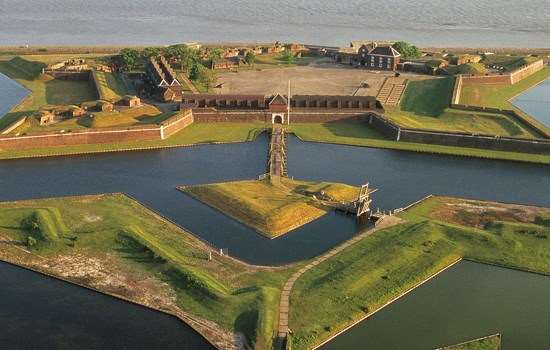
Tilbury Fort
'The banks of the Thames presented a new scene. They were flat but fertile, and almost every town was marked by history. We saw Tilbury Fort and remembered the Spanish Armada' - Frankenstein, Mary Shelley.
-
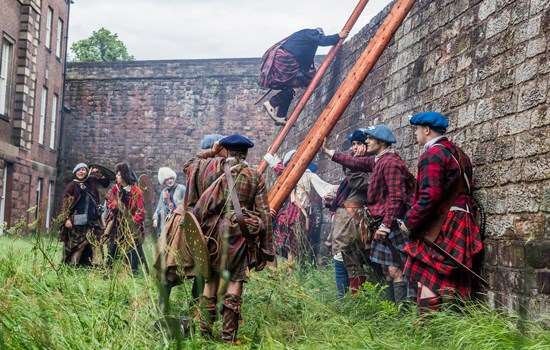
Carlisle Castle
The traditional Ballad of Kinmont Willie tells the tale of a daring raid on Carlisle Castle to free William Armstrong of Kinmont, a renowned Scottish Border Revier, wrongly taken prisoner on a day of truce.
-
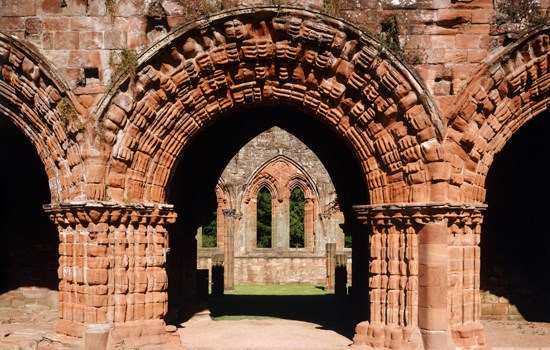
Furness Abbey
William Wordsworth wrote about Furness Abbey in more than one poem. On one visit he found 'a mouldering pile with fractured arch, Belfry, images, and living trees, A holy scene!'
-
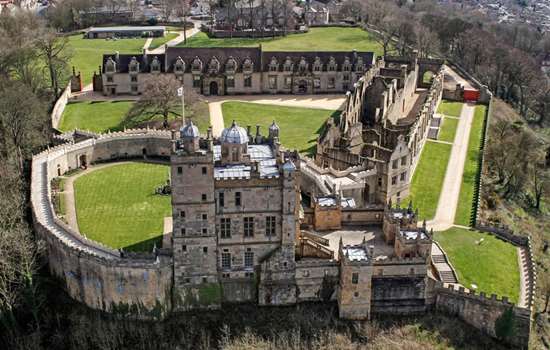
Bolsover Castle
Bolsover Castle was the setting for a masque by Ben Jonson called Love’s Welcome at Bolsover. Bolsover's owner, Sir William Cavendish, commissioned the masque to be performed during King Charles I’s visit in 1634.
-
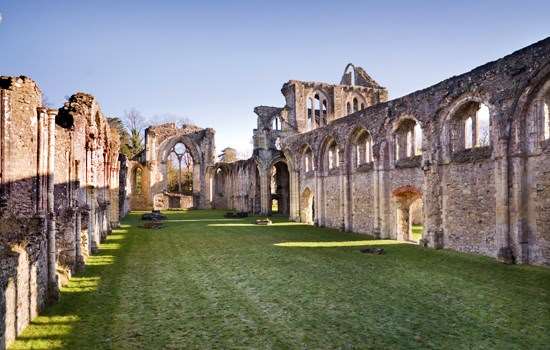
Netley Abbey
It is reported that Netley Abbey was the inspiration for the abbey in Jane Austen's 1817 novel Northanger Abbey. Earlier, the writer Horace Walpole explained in a letter to a friend in 1755: 'they are not the ruins of Netley, but of Paradise.'
-
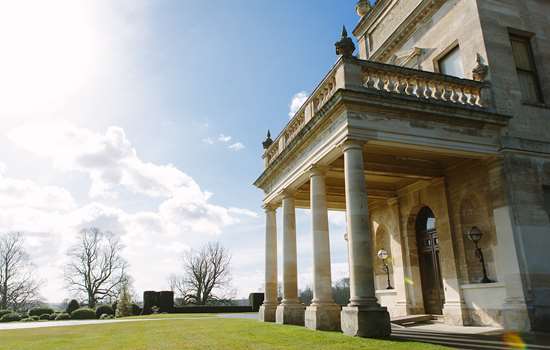
Brodsworth Hall and Gardens
In the late 18th century Brodsworth was owned by a man who left his estate to his unborn descendents. The legal battles that ensued are thought to have provided Charles Dickens with inspiration for the Jarndyce v Jarndyce case in Bleak House.
-
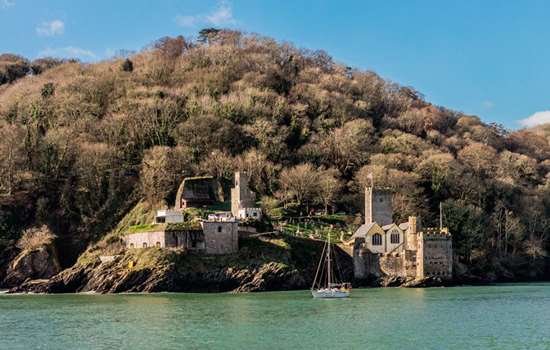
Dartmouth Castle
John Hawley, who began constructing the castle in 1338, was the inspiration for the flamboyant 'Shipman' in Chaucer's Canterbury Tales. He was a merchant, MP, mayor and privateer - meaning he was licensed to attack enemy ships and steal their cargoes.
-
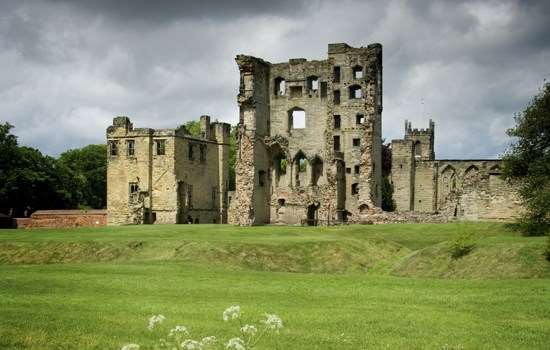
Ashby-De-La-Zouch
Tournament scenes in Sir Walter Scott’s classic 1819 novel Ivanhoe were set at Ashby-de-la-Zouch. A swashbuckling tale that features a cameo from Robin Hood, it was an instant hit upon its release.
More to Explore
-
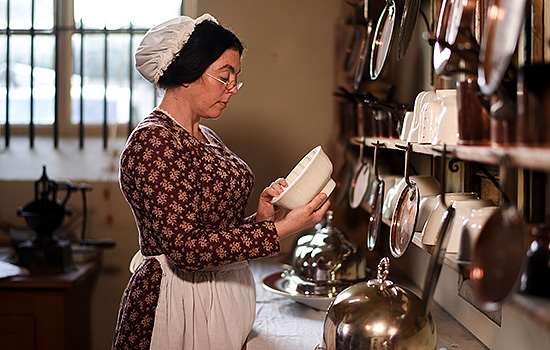
Victorian Cookery Recipes
Watch Victorian recipes being brought to life, and discover the reality of life below stairs at a Victorian country house.
-

The English Heritage Podcast
Join presenter Amy Matthews on a journey through history, as we bring you entertaining tales from unexpected places.
-
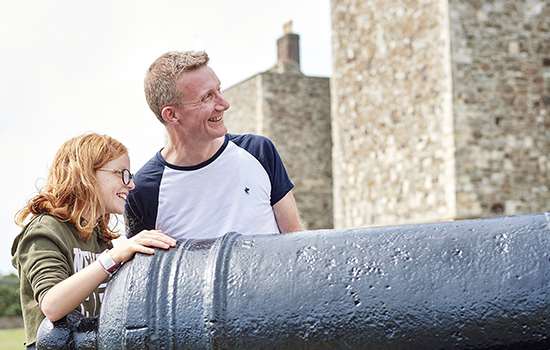
Top 10 Castles
Want to be a king or queen for the day? We asked our Facebook followers to name their favourite English castle.
-
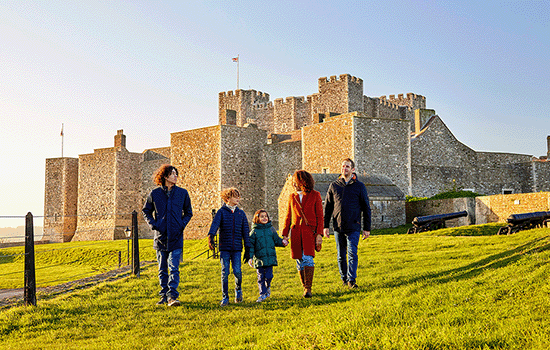
BECOME A MEMBER
An English Heritage membership offers an unlimited annual pass to over 400 historic sites across the country plus free entry for up to six children.
